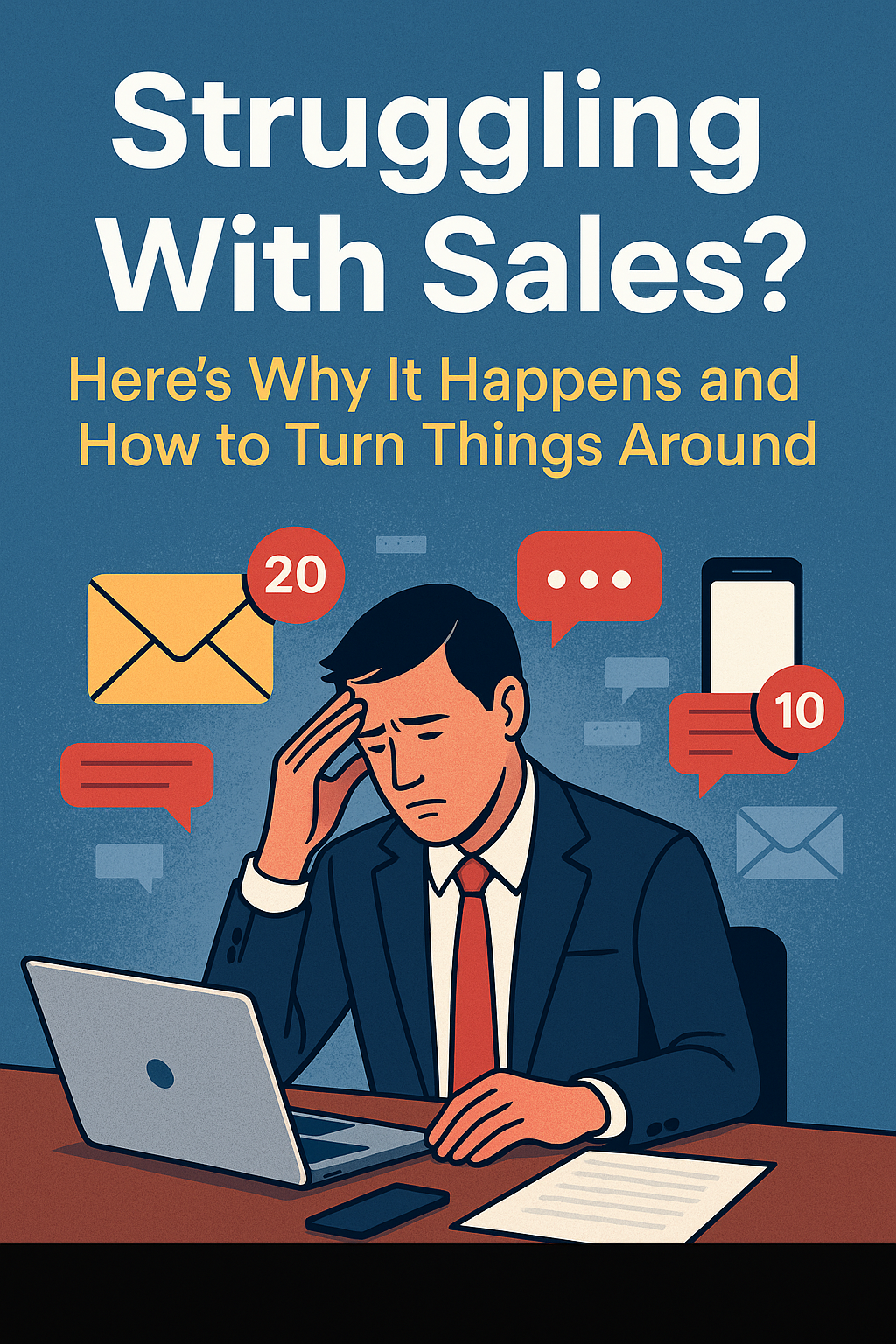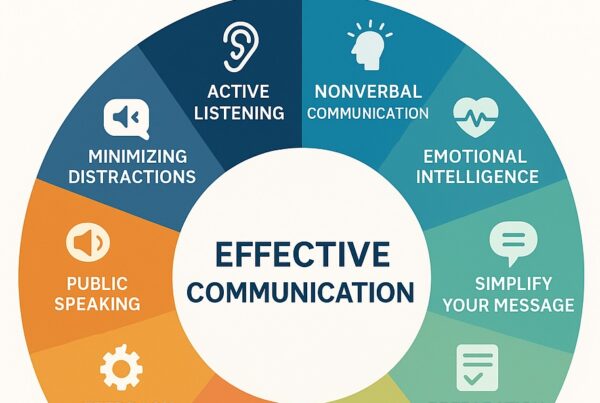Your marketing isn’t producing sales! The question is, why?

The most common complaint I hear from many clients and those seeking a quick fix to their current problems is, “if only I had more customers, I would achieve my goals,” or even at its extreme, “If I just made the next sale, I’ll be able to book the marriage saving break, I have promised my partner.”
I don’t know where you are on this continuum, but you can likely relate. So the big question is why? In this article, I will explain:
- Why your need for sales is a symptom of a deeper-rooted problem, one which becoming better at selling, while helpful, won’t actually solve.
- Why do a full 90% of business books cower away from strategic thinking, particularly around marketing and focus on the tactics, i.e., what to do to fix the hole?
- Why so many courses and so-called solutions are the answer to the provider’s own problems in generating sales and, in effect, only end up costing you money!
Marketing Is Not Sales: How to Distinguish Between the Two Activities

It’s easy to confuse marketing and sales. After all, they are both activities that are related to generating revenue for your business. However, if you want to be effective in your marketing efforts, it is important to understand the distinction between the two. This blog post will discuss the key differences between marketing and sales and how you can use this information to improve your results!
How will treating these as two distinct disciplines produce significant results that outperform those businesses pursuing new customers and increased revenue and income alone through new sales initiatives and techniques?
Before I answer this question, let’s start with some simple definitions and why there is so much confusion.
What is Marketing?
At its simplest, marketing is the process of creating awareness and interest in a product or service. It is about finding ways to reach potential customers and tell them about your offer. Marketing can take many different forms, from traditional advertising to more modern methods like online content marketing. The marketing goal is to generate leads that can be passed on to the sales team.
Marketing involves a lot of research to segment your target market and craft messages that resonate with them. Once you have developed a marketing plan, you must execute it through various channels such as advertising, public relations, digital marketing, etc.
What is Sales?
Sales are all about closing the deal. Once you have generated interest in your product or service through your marketing efforts, it is up to the sales team to convince potential customers to make a purchase. This usually involves some form of negotiation where both parties try to reach a mutually beneficial agreement. Sales can be done in person, over the phone, or online.
The Confusion

Often these Marketing & Sales are used interchangeably and as shorthand for all efforts to make sales. Some companies create a single department that manages these two very distinct activities. I get the confusion, after all, almost all the training out there is focused on teaching you how to improve your selling technique. While this is valuable, you can only sell to those who have raised their hand expressing an interest in your product or service. Think of it this way: if you have a retail space, you can only sell to those who crossed the threshold and entered your space. The same applies to your online presence, and you can only sell to those that visit your site – the big difference being that your sales pitch is static!
What are the real problems?
This article starts by stating that your marketing isn’t producing sales. This statement alone is the root of many of the issues. So many believe that marketing efforts directly result in sales; as I have just stated, this isn’t the case. Yes, marketing will lead to more sales opportunities, but bad marketing causes those opportunities to dry up. In that instance, it won’t matter how skilled a salesperson you are; your business won’t survive.
I summarised the issues as:
- Why your need for sales is a symptom of a deeper-rooted problem, one which becoming better at selling, while helpful, won’t actually solve.
- Why do a full 90% of business books cower away from strategic thinking, particularly around marketing and focus on the tactics, i.e., what to do to fix the hole?
- Why so many courses and so-called solutions are the answer to the provider’s own problems in generating sales and, in effect, only end up costing you money!
Sales are the symptom of a problem and not a cure!

Let’s look at this in reverse; you want more revenue. After all, revenue is the fuel that enables you to create profit. So, where does the revenue come from? Revenue results from you selling your product at a certain price to a customer. Pretty simple, and it doesn’t take an MBA to know this. Let’s ignore the price issue – it isn’t most customers’ reason for buying. Your revenue is then a result of just 2 activities your ability, the creation of a pipeline of prospective customers AND the ability to sell.
This distinction is why so much money is wasted on promises of new and efficient sales processes. Selling is a skill you can learn and improve upon, or if you can’t do so, you can buy in by hiring a great salesperson.
Selling is always done by one person to another. Aspects of it can be automated, but it always boils down to your business processes that are personal and aligned to the wants and needs of your market.
The other side of the equation is attracting potential customers or clients to begin the sales process. This is sometimes referred to as lead generation; however, this is just one aspect of marketing. The reason? When the focus of your marketing is exclusively lead generation, you will always need to generate new leads from outside, returning to the marketplace in search of more sales opportunities.

As Peter Drucker said: “The purpose of business is to create and keep a customer.” (my emphasis)
As such, all your marketing must focus on creating and serving customers and brand loyalty – it’s not just about generating leads but creating relationships. Those businesses that are successful in achieving this take a strategic approach to every aspect of their business activities and, in particular, their marketing strategies.
Once you understand this difference, it will be easier to pinpoint what might really be causing your business’ ups and downs. You’ll also see why simply trying to maintain is not always going to cut it.
The power of thinking strategically and acting tactically

Most businesses understand the importance of thinking strategically. After all, without a clear vision and goals, it can be difficult to make progress. However, many businesses fail to realize the importance of also acting tactically. Strategic thinking is important for setting the overall direction of a business, but tactical thinking is necessary for actually achieving results. Without a sound tactical plan, even the most well-thought-out strategy is likely to fail.
The best way to think about the difference between strategic and tactical thinking is to think of strategy as the objectives for your business – in this instance, marketing and tactics as the activities necessary to achieve the marketing objectives. It is important to note that your overall marketing strategy will likely have several marketing objectives, all in service of the overarching goal.
For example, strategic thinking might involve developing a long-term brand identity for a business. Tactical thinking might involve designing a specific ad campaign that is designed to achieve specific (strategic) objectives within a certain time frame. Strategic thinking is important for setting the stage, but tactical thinking is necessary for actually making progress.
Unfortunately, for the reasons stated earlier, many businesses act tactically, always responding to what is happening – the next symptom – or responding to what the competition is doing and squandering the opportunity to develop a competitive advantage.
In conclusion, both strategic and tactical thinking are important for businesses. Strategic thinking helps to set the overall direction of a business, while tactical thinking helps to achieve specific results. The best way to think about the difference between these two types of thinking is to think of strategy as the long game and tactics as the short game. By understanding and utilizing both types of thinking, businesses can increase their chances of success.
You can’t buy a solution to a problem you haven’t properly defined!

Boxing shadows, running West to see the sunrise or buying gym equipment to fix your sugar addiction are all activities of busyness and not smart! Unfortunately, most small businesses are caught in the trap of needing to fix the next presenting symptom and falsely believe it will solve their problems. They are suckered into buying the next shiny solution, spending outrageous amounts of money on products or services that promise the earth, and failing to move the dial to create sustainable results.
I don’t blame them, as I have fallen into this trap without proper scrutiny and am likely to do so again. It all boils down to the fact that we don’t think we have the time, energy or resources to do anything but act. But spending money on the wrong things or working harder – not smarter is just plain STUPID!
So stop and start to think strategically about what it is you want to achieve – say, more leads, and then ask what the different ways to achieve this goal are and, as importantly, what is wrong with your current behaviour (if any). When undertaking this review, consider whether the issue is one where you have ignored the real reason for not getting the results you want.
Look, I get it, no one wants to consider that their decisions and subsequent behaviour are flawed. But, failure to consider the entire situation can expose you to failures that can put you out of business by wasting the cash by investing in hope!
Doing what has always been done without asking why?
I want to share a story with you to illustrate how trapped we can become by wrong thinking:

The new Jewish bride is making her first big dinner for her husband and tries her hand at her mother’s brisket recipe, cutting off the ends of the roast the way her mother always did. Hubby thinks the meat is delicious but says, “Why do you cut off the ends — that’s the best part!” She answers, “That’s how my mother always made it.”
The next week, they go to the old bubbie’s house, and she prepares the famous brisket recipe, again cutting off the ends. The young bride is sure she must be missing some vital information, so she asks her grandma why she cut off the ends. Grandma says, “Dahlink, that’s the only way it will fit in the pan!”
How to improve your marketing and sales activities
The moral of this story is that many businesses act without understanding why they do what they do. They continue to repeat the same actions without considering whether those actions are actually improving their results or making them worse. To begin to change your business, you must first understand what it is you need to accomplish and then ask why you are doing what you’re doing.
Marketing is not sales! Sales occur as a result of your marketing efforts. Seeing these as distinct activities allows you to effectively make the changes and improvements needed to deliver better revenue and profit for your business. Evaluating each activity helps ensure that time and resources go into the right areas while saving money by avoiding investments in solutions that don’t work.
- You can also create marketing campaigns that are more effective and drive sales growth by understanding your target market and creating messaging that speaks to their needs.
- Use data to track the effectiveness of your efforts and adjust as needed.
- Finally, measure the success of your activities in terms of total revenue generated versus costs invested so you can make educated decisions on where to invest more time or money for greater returns.
Businesses can increase their chances of success by taking a strategic approach to marketing and sales. With a thoughtful assessment of goals coupled with data-driven decision-making, you can improve the performance of both activities and create an environment for sustainable growth over time.
How to Use This Information
Now that you understand the difference between marketing and sales, you can use this information to improve your results! Here are a few tips:
- Make sure you have a clear understanding of your target market. WHO do you want to reach with your marketing efforts? This will help you create messages that resonate with them and generates interest.
- When designing your marketing plan, remember you can only talk to one customer at a time and that each prospect is unique and want to be perceived as such, even though they are part of a group. Being part of the group doesn’t mean that they will respond to the same message in the same way. Therefore, ensure you develop a marketing mix that talks to your avatars using different modalities and reaches them across many mediums, including media.
- Advertising is not marketing; it is one of the tactics used to achieve your marketing goals. Remember you are seeing customer interest, so make sure that this is one of the goals (define how you will measure it) when creating your plan.
- Keep your sales goals in mind when creating your marketing campaigns. What are you trying to achieve with your marketing? Make sure every campaign has a specific purpose that aligns with your overall sales goals.
- Track your results to measure your marketing activities’ return on investment (ROI). This will help you determine which activities provide the most bang for your buck so that you can focus your efforts on those producing results.
- Don’t try to do everything yourself! If you’re not an expert in marketing AND sales, consider working with someone who specializes in one or the other (or both!). Having a partner who understands your goals and knows how to execute effectively can make a world of difference in achieving success.
- Finally, remember that marketing and sales are two sides of the same coin—neither can exist without the other. To successfully generate revenue for your business, it is important to have a well-rounded strategy incorporating both activities.
Conclusion
To sum it up, marketing is not sales. While they are related and complementary, effective marketing requires a deeper understanding of your target audience and what resonates with them. Sales then come into play by building relationships with potential customers that have been attracted by your marketing efforts and convincing them to make a purchase. It is important to recognize the differences between these two disciplines and focus on optimizing each separately. By doing this, you can be sure that your business is well-positioned to create a steady stream of leads which leads to sales.
Understanding the difference between marketing and sales can make all the difference in improving your results. Invest the time and resources needed to understand the two activities, and you will soon see your business reaping the rewards!
Good luck! 🙂



